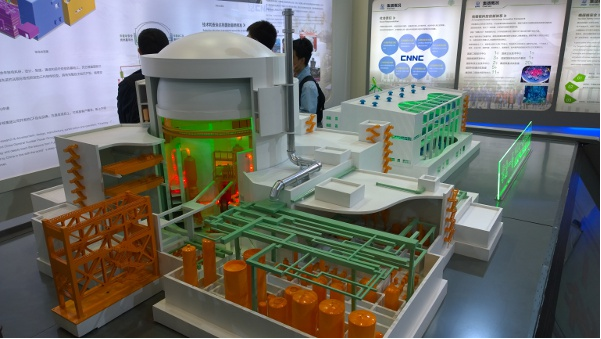China has very ambitious plans for nuclear power. They have twenty one operating nuclear power reactors and there are twenty eight more under construction. Nuclear power supplies two percent of the electricity in China and they want to raise that to six percent by 2020. Then they want to raise that to sixteen percent by 2030. Most of the reactor construction involves what are called Generation Two reactors, the current widely used type of power reactor.
China has been working on their own design for a Generation Three reactor. There have been calls by Chinese government agencies for constructing more of the new Gen Three design instead of the old Gen Two types. China intends to export nuclear technology but all of its existing reactors are imports. In order to export nuclear technology, China has to have its own designs for which it holds the intellectual property rights. There are several different governmental agencies and government owned companies involved in designing and building nuclear reactors.
In 2004, the State Council approved importing Generation Three reactor technology from foreign sources. An open bidding process was held. The newly formed State Nuclear Power Technology Corporation is under the direct administration of the State Council. It was given the task of selecting the nuclear technology that would be imported. By 2006, the experts at the SNPTC had settled on the Westinghouse AP1000 Generation Three reactor design and four AP1000 are currently under construction. The SNPTC has been working on developing a CAP1400 with higher generating capacity. This design would be totally owned by China.
The China National Nuclear Corporation began working on the design of a Chinese version of the AP1000 in 1994 but the approval of the Westinghouse AP1000 by the SNPTC in 2007 caused much of the funding and technology support to shift from their project to the AP1000 program of the SNPTC. After several years passed, CNNC was able to continue work on its version of a Chinese reactor design. In late 2011, CNNC announced that its ACP1000 had reached the engineering design phase.
At the same time that CNNC was working on designing a Chinese version of the AP1000, China General Nuclear had imported two French Areva M-310 reactors and was developing a reactor design based on the French reactors. This effort was successful and resulted in the Generation Two CPR-1000 Chinese reactor. It was almost completely Chinese but the French still retained some intellectual property rights so the Chinese could not export that reactor design. By 2010, fifty seven of the CPR-1000 reactors were scheduled to be constructed. Following the Fukushima disaster in March of 2011, it was decided that Generation Three was the future. Six CPR-1000 reactors are in operation and sixteen are under construction but there will be no more built.
The State Council and the National Energy Administration of China were confronted with the task of reconciling these two different reactors designs being developed by two competing government owned utility companies. The CPR-1000 was a proven technology while the ACP1000 only existed on paper. After some political maneuvering, it was decided that the two designs should be merged and upgraded to Generation Three. This will be difficult because the two reactor designs are quite different. The Hualong One reactor design is the designation for the new combined reactor design.
High-level Chinese government agencies have decided that the Hualong will be an important "brand" of Chinese nuclear technology exports. They have called for early deployment of demonstration Hualong reactors in China attract potential international buyers.
Hualong One reactor model:
